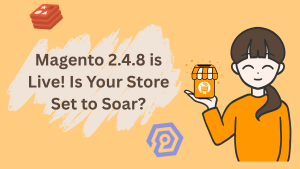What is Headless Commerce?
The term headless commerce describes an architecture where the front-end (the “head”) of the e-commerce experience is decoupled from the back-end commerce engine. In other words, the customer-facing interface (web store, mobile app, smart kiosk, etc.) connects to the commerce services (catalogue, checkout, orders) via APIs. This enables brands to evolve user-interfaces independently of the logic and systems powering their commerce.
For example, a retailer running on WooCommerce or Shopify might find their front-end tightly coupled to the back-end platform, making redesigns, channel expansions or performance optimisation harder. With a headless model, brands pick a headless ecommerce platform or build a custom front-end, then connect to back-end services via APIs.
Why Modern Brands Are Moving Beyond Shopify & WooCommerce
Limitations of Traditional Platforms
While Shopify and WooCommerce remain strong and popular, they often present constraints when brands scale or demand agile omnichannel delivery. Limitations may include:
-
Templated front-ends with restricted customisation or slower performance under heavy load.
-
Difficulty in supporting multiple channels (e.g., web + mobile app + voice commerce + kiosk) without major reworking.
-
Front-end changes (UX redesigns) requiring coordination or re-platforming of back-end systems.
-
Integrations with best-of-breed services (PIM, DAM, CMS, custom analytics) can become complex when tightly coupled.
New Demands in 2025
In 2025, we observe several drivers pushing brands toward headless:
-
A large share of commerce is web-based and mobile-based, and consumers expect seamless, fast experiences. For example, one market estimate shows the global headless commerce market at about US$ 1.74 billion in 2025, projected to grow to US$ 7.16 billion by 2032 at ~22.4 % CAGR.
-
Adoption stats suggest that two-thirds (≈66 %) of businesses in Australia were already using headless technologies, with one in five planning adoption within 12 months.
-
Brands increasingly prioritise omnichannel presence, personalisation, rapid iteration of front-ends, and flexible architectures. For instance, a 2024 report from Salesforce found that 77 % of high-performing e-commerce companies invest in headless architectures to enhance customer experience and speed to market.
Together, these dynamics mean that for many growing brands, the traditional “monolithic” e-commerce platform (like standard Shopify or WooCommerce) may limit innovation, performance or expansion — making a headless approach increasingly strategic.
Planning to move beyond Shopify or WooCommerce?
Askan helps ambitious brands adopt headless commerce architectures built for speed, flexibility, and growth. From performance audits to full platform migrations, our experts guide you every step of the way. Explore Headless Commerce Solutions →
Key Benefits of Headless Commerce
Flexibility & Front-End Innovation
With the front-end decoupled, teams can experiment with new UI frameworks (React, Vue, mobile-first designs), roll out custom experiences faster, and update without disturbing the back-end commerce systems. For example, headless adoption can reduce time-to-launch of new customer-facing interfaces significantly.
Omnichannel & API-First Integration
A true headless architecture is built on APIs — the back-end exposes endpoints for catalogue, customer, orders, checkout etc. That enables the same commerce logic to serve multiple channels: website, mobile app, voice assistants, kiosks, IoT. For instance, the web-based commerce segment is expected to hold 52.4 % share of the global headless commerce market in 2025, showing the dominance of multi-device touchpoints.
Performance and Scalability
Decoupling allows front-ends to be optimised (e.g., via JAMstack, SSR/SSG, CDNs) for speed and SEO. One source notes that websites with loading times under 2 seconds enjoy higher conversion rates, a key advantage when brands adopt headless.
Future-Proofing
Because brands can swap or evolve front-ends, integrate new channels, or adopt new technologies (AI-driven personalisation, AR/VR, voice commerce) without rewriting the back-end, headless architecture becomes a strategic hedge against rapid market change.
When Does Adopting a Headless E-commerce Platform Make Sense?
Signs Your Store Is Ready
Consider headless if your business fits one or more of these:
-
You run or plan multiple channels (web + mobile app + kiosk + omnichannel).
-
You face performance or scalability issues (slow page loads, high bounce rates, templated UI limitations).
-
You demand frequent front-end updates (UX redesigns, new interactive features).
-
You operate in multiple geographies and need flexible catalogues, currencies, localisation.
-
You're prepared (or willing) to allocate technical resources (front-end + back-end teams) and accept higher initial investment.
Considerations & Trade-offs
-
Implementation cost is typically higher than a standard monolithic platform. Some reports cite “high initial implementation costs” as a barrier to adoption.
-
Requires more coordination between front-end and back-end teams, and integration of multiple services (PIM, CMS, analytics).
-
Ongoing maintenance and monitoring become more complex when multiple systems are decoupled.
-
If your store is single-channel, simple, small scale (e.g., few SKUs, limited customisation) — a traditional platform (e.g., standard Shopify or WooCommerce) may still be appropriate.
Wondering if your current store is ready for a headless upgrade?
Our specialists at Askan can evaluate your site’s performance, tech stack, and scalability to help you decide if a headless commerce platform fits your 2025 roadmap. Request a Free Platform Audit →How to Get Started with Headless Commerce
-
Assess your current state – map your pain points (performance, channel limits, UX, growth).
-
Define your goals – e.g., speed to market, support mobile/native apps, expansion into new channels.
-
Choose your architecture – decide between hybrid (front-end decoupling with existing platform) or full headless (API-first back-end).
-
Select your platform/stack – there are many headless commerce platforms to watch in 2025, supporting API-first commerce, e.g., commercetools (cloud-native) and others.
-
Plan migration carefully – front-end stack, catalogues, checkout flows, integrations (CMS, PIM, DAM), data migration.
-
Launch incrementally – pilot one channel, test performance, iterate, then scale.
-
Monitor metrics – track load time, bounce rate, conversion, multi-channel performance, and adjust.
Real-Time Example & Trend Snapshot (2025)
According to the industry report published April 2025, the global headless commerce market is valued at approximately US$ 1.74 billion in 2025 and forecast to reach US$ 7.16 billion by 2032, growing at a CAGR of ~22.4 %.
In Australia, approximately 66 % of businesses already use headless technologies and 21 % plan to adopt within the next 12 months, showing strong momentum.
These data point to real-time adoption and validate that the shift to headless commerce is not hypothetical, but already happening.
Summary & Key Takeaways
-
The primary keyword headless commerce and the secondary keyword headless ecommerce platform should appear naturally in the content (as above).
-
For entrepreneurs, business professionals and online store owners, the question is less “Should we go headless?” and more “Is the time right for us to move beyond Shopify & WooCommerce?”
-
If your growth plan includes multi-channel delivery, custom UI/UX, global expansion, or high performance demands — adopting a headless architecture can be a strategic advantage.
-
Conversely, if your store remains single-channel, standard, small-scale, and already meets performance goals — you might stay with a traditional platform and revisit headless when growth demands it.
-
Ultimately, the move to headless is about flexibility, speed, future-proofing — not just technical complexity.











Headless Commerce in 2025: Why Modern Brands Are Moving Beyond Shopify & WooCommerce
What is Headless Commerce? The term headless commerce describes an architecture where the front-end (the...
Share this link via
Or copy link